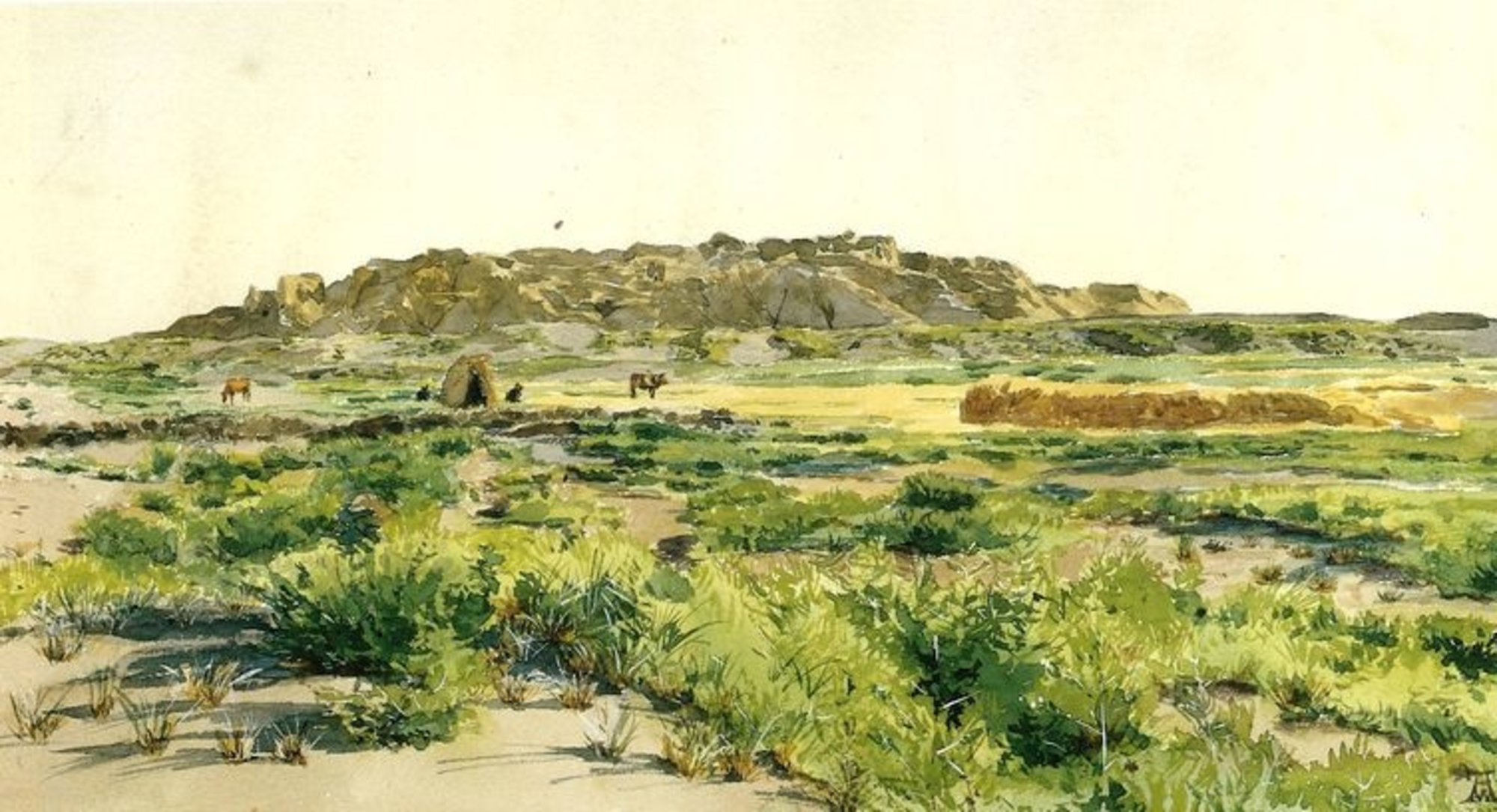- Accueil
- Babylon In The Mesopotamian Plain
- Babylon in the Mesopotamian plain
Babylon is said in Akkadian Bab-ili(m) and in Sumerian ká.dingir.ra, meaning the "Gate of the gods". It is the capital of Babylonia.
Babylonia
Babylonia corresponds to the geographical area called Lower Mesopotamia, that is to say the alluvial plain located between Baghdad and the Persian Gulf in the south of present-day Iraq. Babylon is established on a branch of the Euphrates River, about 90 km south of modern Baghdad and near the modern city of Hillah.
Babylon is a major city in the ancient Near East, an area that stretches from the eastern coast of the Mediterranean to the Zagros Mountains, the mountainous barrier that separates modern Iraq from the Iranian plateau. The characteristic feature of this region is the presence of large urban centers connected to the main branches of the Euphrates River.
The borders of Babylonia
Most of the borders of Babylonia are natural: it is delimited in the south by the Persian Gulf, in the west by the limit between the Mesopotamian alluvial plain and the desert, and finally in the east by the foothills of the Zagros chain. Its northern border is more blurred and extends over a long disputed area. The plain of Lower Mesopotamia, very slightly sloping (37 m altitude at the latitude of Baghdad), belongs to the semi-arid portion of the Near East. According to climatologists, it has not undergone any radical climatic changes for 10,000 years. The summer heat and the scarcity of rainfall (115 to 135 mm per year) make irrigation essential for the cultivation of the soil.
